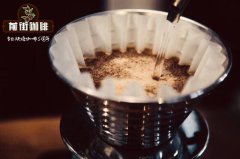Guatemala Vivienne South Fruit Wash Olga Blanca SHB Fruit Fresh Nuts mellow

Professional coffee knowledge exchange more coffee bean information please follow the coffee workshop (Wechat official account cafe_style)
Qianjie-Guatemala washing Oga Blanca SHB introduction
Huehuetenango in Guatemala should be familiar with, and its lovely name is also a treasure place for producing boutique coffee. In 2015, five of the top seven COE in Guatemala came from Vivette Nanguo, including (El Injerto) Manor.
The name Huehuetenango is said to come from Nahuatl, which means the land of the ancients or ancestors and is the highest producing area in Guatemala on average. Thanks to the dry hot wind from the Tehuantepec Plain in neighboring Mexico to the north, the producing area is high but frost-free, and coffee can even be grown at 2000 meters. Vivette Nan Fruit belongs to the non-volcanic rock producing area of Guatemala, with a unique fruit flavor and bright and delicate acidity.
Founded in 1969, the Oga Blanca Cooperative, with 45 members and a farming area of 1.54 square kilometers, produces about 3300 bags of raw beans or about 12 containers a year. Qualifications include: FLO-CERT (Fair Trade Certification Organization), UTZ certification, Starbucks Cafe Practices.
As the CUILCO area is rich in water resources, and many farmers have water washing equipment, they can transport parchment (parchment status) directly to the cooperative after self-processing, thus avoiding the twists and turns of transportation to the washing treatment plant after picking.
Wash Ogabanca in Guatemala
Origin: Vivette Nanguo
Grade: SHB
Treatment: washing
Variety: bourbon Bourbon 50% and Kaddura Caturra 50%
Altitude: 1400-1800 m
Production season: 2016
Flavor: fruit, honey, lemon, nuts
Knowledge: Guatemala mountain forest area accounts for 2/3 of the national area, rich in high-quality coffee beans, its strong sour taste, mellow taste and slightly wild, can be used as a single drink or for the preparation of comprehensive coffee.
In short: Qianjie is a coffee research hall, happy to share the knowledge about coffee with you, we share unreservedly just to make more friends fall in love with coffee, and there will be three low-discount coffee activities every month. The reason is that Qianjie wants to make more friends drink the best coffee at the lowest price, which has been Qianjie's tenet for 6 years!
END
Important Notice :
前街咖啡 FrontStreet Coffee has moved to new addredd:
FrontStreet Coffee Address: 315,Donghua East Road,GuangZhou
Tel:020 38364473
- Prev

Is coffee sour or bitter which tastes good? is coffee sour? what is sour?
Professional coffee knowledge exchange more coffee bean information please follow the coffee workshop (Wechat official account cafe_style) front street-coffee acidity introduction in my concept, coffee acid is actually divided into good acid and bad acid, regular coffee drinkers will actually find that good acid must be with sweet acid, while bad acid will hardly have sweet feeling, so it forms a sharp point.
- Next

Introduction to Coffee Bean varieties and Taste Katim Coffee beans, all right? in addition to flavor and taste
Professional coffee knowledge exchange more coffee bean information please follow the coffee workshop (Wechat official account cafe_style) front street-Katim variety introduction Catimor, from the cross between timor and caturra, in 1959, developed by the Portuguese coffee leaf rust research center CIFC, the research direction is resistance
Related
- Beginners will see the "Coffee pull flower" guide!
- What is the difference between ice blog purified milk and ordinary milk coffee?
- Why is the Philippines the largest producer of crops in Liberia?
- For coffee extraction, should the fine powder be retained?
- How does extracted espresso fill pressed powder? How much strength does it take to press the powder?
- How to make jasmine cold extract coffee? Is the jasmine + latte good?
- Will this little toy really make the coffee taste better? How does Lily Drip affect coffee extraction?
- Will the action of slapping the filter cup also affect coffee extraction?
- What's the difference between powder-to-water ratio and powder-to-liquid ratio?
- What is the Ethiopian local species? What does it have to do with Heirloom native species?

